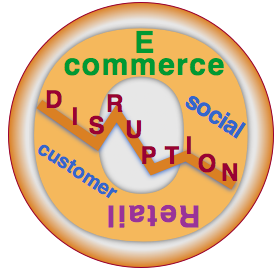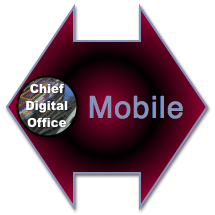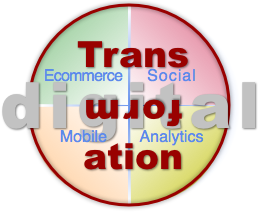 Chicago-Style Innovation is my notes from Lightbank Innovation Day, which took place on 9 May 2013 at the City Winery (presentations) and Lightbank’s offices (networking). Throughout the day, it was obvious that the Knowledge Economy’s Social Channel was unfolding; entrepreneurs’ startups are stripping off an increasing breadth of enterprise processes and using digital social software to improve them. For example, Needle’s platform creates experts in user (customer) use cases and outcomes that outperform anyone at retail; Fieldglass, HighGround, Fooda, oDesk and TalentBin take aim at various parts of human capital while Aon Hewitt showed how to practice enterprise innovation on the inside; DoubleDutch aims to [at long last] digitize trade shows and conferences through its platform’s geosocial functions. Sprout Social and Contently offered social tools. Chicago-Style Innovation is my notes from Lightbank Innovation Day, which took place on 9 May 2013 at the City Winery (presentations) and Lightbank’s offices (networking). Throughout the day, it was obvious that the Knowledge Economy’s Social Channel was unfolding; entrepreneurs’ startups are stripping off an increasing breadth of enterprise processes and using digital social software to improve them. For example, Needle’s platform creates experts in user (customer) use cases and outcomes that outperform anyone at retail; Fieldglass, HighGround, Fooda, oDesk and TalentBin take aim at various parts of human capital while Aon Hewitt showed how to practice enterprise innovation on the inside; DoubleDutch aims to [at long last] digitize trade shows and conferences through its platform’s geosocial functions. Sprout Social and Contently offered social tools.
Presenters Gian Fulgoni, J Schwan and Ramon De Leon shared valuable advice for entrepreneurs, investors and enterprise executives. Fulgoni provided statistics that showed how mobile was eclipsing ecommerce and analog commerce; Schwan opened the audience’s eyes to Ubiquitous Computing and the Internet of Things, and De Leon showed the power of (pervasively ;^) being yourself.
[…]
How to Tap the Social Business Double Value Proposition outlines an efficient and rigorous process for using social business for digital transformation in two ways: social business itself can drive reputation, preference and profit, and it’s the fastest way to develop requirements for mobile, ecommerce and big data investments.
![How to Tap the Social Business Double Value Proposition [CDO Guide to Social Business Part2]](http://rollyson.net/wp-content/uploads/2013/06/CDO_socbus_2_main2.png)
The social business double value proposition works because it discovers, engages and validates the organization’s understanding of stakeholder outcomes. Every organization’s crucial stakeholders have outcomes that they hope to attain by interacting with the organization or using its products or services. Developing deep and broad knowledge of stakeholder outcomes enables the organization to serve and quickly deepen their relationships with their stakeholders—by helping them attain their outcomes by collaborating online; moreover, since it opens fast and inexpensive communication and collaboration channels with them, it can create a continuous innovation process and sustainable advantage over rivals.
The Guide to Social Business Part2 shows how to maximize efficiency by using external and internal analyses to create and execute social business strategy, […]
Empowered customers and omni-channel commerce are mirrors of each other, and both are transforming “retail.”
 [UPDATED] Connected customers have the Internet in their pockets and use mobile and other devices in all stages of conceptualizing, considering, evaluating, buying and using purchased products and services. These customers want to interact with firms and brands in a seamless experience that features single sign-on as an entry point; they want the firm to respond using their individual data when that makes interacting more valuable. Omni-channel commerce refers to a collection of technologies, practices and strategies firms use to provide the personal individualized experience that connected customers expect. [UPDATED] Connected customers have the Internet in their pockets and use mobile and other devices in all stages of conceptualizing, considering, evaluating, buying and using purchased products and services. These customers want to interact with firms and brands in a seamless experience that features single sign-on as an entry point; they want the firm to respond using their individual data when that makes interacting more valuable. Omni-channel commerce refers to a collection of technologies, practices and strategies firms use to provide the personal individualized experience that connected customers expect.
IBM’s 2012 study of retail customers in eight mature economies (Australia, Canada, France, Italy, Japan, Spain, the UK and the USA) and seven growth economies (Argentina, Brazil, Chile, China, Colombia, Mexico and South Africa) lays bare that the retail “shopping” experience has shifted profoundly, although you wouldn’t know it by looking at most offline or online retailers’ presences. The paper, “Winning over the empowered consumer: Why trust matters,” is a call to […]

The Mobile Competency Center’s mobile transformation roadmap assumes “average” stakeholder (“user”) mobile adoption and enterprise competency, but its premise is that all organizations can use mobile to transform their relationships with stakeholders. This matters because most firms have weak customer relationships, which consist of mass communications, impersonal sales transactions and cost-minimized service processes. Done right, mobile offers visionary Chief Digital Officers a rare chance to increase their relevance to customers—and boost competitiveness.
This roadmap is necessarily a broad guideline because each organization’s optimal path of initiatives and milestones will depend on numerous variables. The sequence and priority of each part of mobile transformation will depend on the mobile adoption of highest priority stakeholders, how the firm wants to connect with them and the firm’s mobile resources and expertise. Knowing these variables will enable the CDO to sequence the roadmap.
Mobile Transformation Roadmap is Part3 of The CDO Guide to Mobile for Digital Transformation.
[…]
 How Mobile Transforms Relationships Between Brands and Customers presents underappreciated aspects of mobile user behavior before outlining three approaches for engaging customers and other stakeholders. How Mobile Transforms Relationships Between Brands and Customers presents underappreciated aspects of mobile user behavior before outlining three approaches for engaging customers and other stakeholders.
As outlined in Ubiquitous Computing Primer, “mobile” is much more than a channel or platform internet-connected devices. By any measure, the Internet’s information and utility are growing exponentially, and mobile devices put the Internet in people’s pockets, so they transform human capabilities and experience.
People plus the Internet have expanded abilities to act and perform. For example, having the optimal assortment of travel apps enables people to avoid many problems and capitalize on opportunities; they miss planes less often, pay less for hotels and suffer less crime. The same holds true for most human endeavors, so people without mobile internet are increasingly at disadvantage. [For more context, see: 1) the “Geoweb” and “Web 3.0.”
How Mobile Transforms Relationships Between Brands and Customers is Part2 of The CDO Guide to Mobile for Digital Transformation.
[…]
 Personal Individualized Experience is the DNA of digital transformation. It refers to using an optimal mix of people and digital technologies to provide personal interactions at scale, so it’s central to the mission of chief digital officers and CEOs and boards who hire them. Prior to digital and social technologies, organizations faced a trade-off between “personal” and “efficient” interactions with their stakeholders (customers, clients, employees, partners, regulators… hereafter “users”). Now this is no longer true; they can provide personal interactions at scale, once they learn how and where to interact efficiently and authentically. Personal Individualized Experience is the DNA of digital transformation. It refers to using an optimal mix of people and digital technologies to provide personal interactions at scale, so it’s central to the mission of chief digital officers and CEOs and boards who hire them. Prior to digital and social technologies, organizations faced a trade-off between “personal” and “efficient” interactions with their stakeholders (customers, clients, employees, partners, regulators… hereafter “users”). Now this is no longer true; they can provide personal interactions at scale, once they learn how and where to interact efficiently and authentically.
Used well, digital and social technologies retain an authentic human element while digitizing key aspects of relating to people. Therefore, organizations/firms/brands (hereafter “firms”) can now provide the Personal Individualized Experience (PIE). This post explains the three components of PIE and shows how firms can use them to build and maintain authentic and profitable relationships with users.
[…]
 Ubiquitous Computing Primer reveals mobile’s ultimate business context and enables astute digital executives to create a whole new layer of value from their mobile investments. “Mobile” is far more important than launching smartphone and tablet apps because “smart” devices will interact with each other to provide a new level of capability and customer experience. This primer is a very brief treatment of a complex subject, so follow its links to drill down. Ubiquitous Computing Primer reveals mobile’s ultimate business context and enables astute digital executives to create a whole new layer of value from their mobile investments. “Mobile” is far more important than launching smartphone and tablet apps because “smart” devices will interact with each other to provide a new level of capability and customer experience. This primer is a very brief treatment of a complex subject, so follow its links to drill down.
In 2013, smartphones and tablets imply that people are interacting with each other and “the Internet,” but “mobile” is becoming a “feature” of all kinds of devices and products in a phenomenon called “ubiquitous computing.”
Ubiquitous Computing Primer is Part1 of The CDO Guide to Mobile for Digital Transformation.
[…]
 Chief digital officers and transformation will go hand in hand as the position and its competencies take shape over the next few years. Historically, commercial, government and nonprofit enterprises, when faced with profound business change or technology disruption, respond by elevating new types of leader to the “C” level. Chief Knowledge Officer, Chief Process Officer, Chief Ecommerce Officer and the like become de rigeur for a few years and fade, either because the new disruption proved less sustainable than anticipated or because the competency became subsumed by a more core function. Chief digital officers and transformation will go hand in hand as the position and its competencies take shape over the next few years. Historically, commercial, government and nonprofit enterprises, when faced with profound business change or technology disruption, respond by elevating new types of leader to the “C” level. Chief Knowledge Officer, Chief Process Officer, Chief Ecommerce Officer and the like become de rigeur for a few years and fade, either because the new disruption proved less sustainable than anticipated or because the competency became subsumed by a more core function.
I predict that the Chief Digital Officer (CDO) will play a vital role at most organizations through 2020, but the organizational role will be fleeting as a standalone. “Digital” will integrate all functions and be the standard eventually, but organizations require intense transformation to get there, so the CDO will play a crucial role. My ongoing analysis of social business adoption indicates that the market for social business transformation will hit an inflection point by 2017, as more advisors and executives see the power and results of digital […]
 Branch disruption enables unusual opportunity for bank executives who consider transforming their relationships with clients. More generally, retail banking provides an excellent example of an Industrial Economy industry whose services are facing commoditization and weakening profits due to the waning of the Productized Channel of Value. In 2013, bank branch networks are under intense scrutiny because they are expensive, and client visits have been falling steadily for several years as e-banking and m-banking adoption have accelerated. Astute banks will use branches to transform their client relationships by leveraging the Social Channel. Here’s how they will do it. Branch disruption enables unusual opportunity for bank executives who consider transforming their relationships with clients. More generally, retail banking provides an excellent example of an Industrial Economy industry whose services are facing commoditization and weakening profits due to the waning of the Productized Channel of Value. In 2013, bank branch networks are under intense scrutiny because they are expensive, and client visits have been falling steadily for several years as e-banking and m-banking adoption have accelerated. Astute banks will use branches to transform their client relationships by leveraging the Social Channel. Here’s how they will do it.
[…]
 Banks are under intensifying profit pressure, so all are reexamining the size and value of bank branch networks. In How Many Bank Branches Do We Need in the U.S., posted in Celent Banking Blog, Bob Meara offers a brief discussion of the concept of “branch flexing,” as coined by Oliver Wyman to describe optimization. It’s no surprise that banks are questioning their massive branch expansions during the 2000s, especially in light of increased capital requirements and regulatory costs, which increase cost of operations. Moreover, margins are razor thin as interest rates are at historic lows. Banks are under intensifying profit pressure, so all are reexamining the size and value of bank branch networks. In How Many Bank Branches Do We Need in the U.S., posted in Celent Banking Blog, Bob Meara offers a brief discussion of the concept of “branch flexing,” as coined by Oliver Wyman to describe optimization. It’s no surprise that banks are questioning their massive branch expansions during the 2000s, especially in light of increased capital requirements and regulatory costs, which increase cost of operations. Moreover, margins are razor thin as interest rates are at historic lows.
What does this mean for branches? I’ll offer a surprising alternative.
[…]
|
|
 Chicago-Style Innovation is my notes from Lightbank Innovation Day, which took place on 9 May 2013 at the City Winery (presentations) and Lightbank’s offices (networking). Throughout the day, it was obvious that the Knowledge Economy’s Social Channel was unfolding; entrepreneurs’ startups are stripping off an increasing breadth of enterprise processes and using digital social software to improve them. For example, Needle’s platform creates experts in user (customer) use cases and outcomes that outperform anyone at retail; Fieldglass, HighGround, Fooda, oDesk and TalentBin take aim at various parts of human capital while Aon Hewitt showed how to practice enterprise innovation on the inside; DoubleDutch aims to [at long last] digitize trade shows and conferences through its platform’s geosocial functions. Sprout Social and Contently offered social tools.
Chicago-Style Innovation is my notes from Lightbank Innovation Day, which took place on 9 May 2013 at the City Winery (presentations) and Lightbank’s offices (networking). Throughout the day, it was obvious that the Knowledge Economy’s Social Channel was unfolding; entrepreneurs’ startups are stripping off an increasing breadth of enterprise processes and using digital social software to improve them. For example, Needle’s platform creates experts in user (customer) use cases and outcomes that outperform anyone at retail; Fieldglass, HighGround, Fooda, oDesk and TalentBin take aim at various parts of human capital while Aon Hewitt showed how to practice enterprise innovation on the inside; DoubleDutch aims to [at long last] digitize trade shows and conferences through its platform’s geosocial functions. Sprout Social and Contently offered social tools.
![How to Tap the Social Business Double Value Proposition [CDO Guide to Social Business Part2]](http://rollyson.net/wp-content/uploads/2013/06/CDO_socbus_2_main2.png)
 [UPDATED] Connected customers have the Internet in their pockets and use mobile and other devices in all stages of conceptualizing, considering, evaluating, buying and using purchased products and services. These customers want to interact with firms and brands in a seamless experience that features single sign-on as an entry point; they want the firm to respond using their individual data when that makes interacting more valuable. Omni-channel commerce refers to a collection of technologies, practices and strategies firms use to provide the personal individualized experience that connected customers expect.
[UPDATED] Connected customers have the Internet in their pockets and use mobile and other devices in all stages of conceptualizing, considering, evaluating, buying and using purchased products and services. These customers want to interact with firms and brands in a seamless experience that features single sign-on as an entry point; they want the firm to respond using their individual data when that makes interacting more valuable. Omni-channel commerce refers to a collection of technologies, practices and strategies firms use to provide the personal individualized experience that connected customers expect.
 Personal Individualized Experience is the DNA of digital transformation. It refers to using an optimal mix of people and digital technologies to provide personal interactions at scale, so it’s central to the mission of chief digital officers and CEOs and boards who hire them. Prior to digital and social technologies, organizations faced a trade-off between “personal” and “efficient” interactions with their stakeholders (customers, clients, employees, partners, regulators… hereafter “users”). Now this is no longer true; they can provide personal interactions at scale, once they learn how and where to interact efficiently and authentically.
Personal Individualized Experience is the DNA of digital transformation. It refers to using an optimal mix of people and digital technologies to provide personal interactions at scale, so it’s central to the mission of chief digital officers and CEOs and boards who hire them. Prior to digital and social technologies, organizations faced a trade-off between “personal” and “efficient” interactions with their stakeholders (customers, clients, employees, partners, regulators… hereafter “users”). Now this is no longer true; they can provide personal interactions at scale, once they learn how and where to interact efficiently and authentically. Chief digital officers and transformation will go hand in hand as the position and its competencies take shape over the next few years. Historically, commercial, government and nonprofit enterprises, when faced with profound business change or technology disruption, respond by elevating new types of leader to the “C” level. Chief Knowledge Officer, Chief Process Officer, Chief Ecommerce Officer and the like become de rigeur for a few years and fade, either because the new disruption proved less sustainable than anticipated or because the competency became subsumed by a more core function.
Chief digital officers and transformation will go hand in hand as the position and its competencies take shape over the next few years. Historically, commercial, government and nonprofit enterprises, when faced with profound business change or technology disruption, respond by elevating new types of leader to the “C” level. Chief Knowledge Officer, Chief Process Officer, Chief Ecommerce Officer and the like become de rigeur for a few years and fade, either because the new disruption proved less sustainable than anticipated or because the competency became subsumed by a more core function. Branch disruption enables unusual opportunity for bank executives who consider transforming their relationships with clients. More generally, retail banking provides an excellent example of an Industrial Economy industry whose services are facing commoditization and weakening profits due to the waning of the Productized Channel of Value. In 2013, bank branch networks are under intense scrutiny because they are expensive, and client visits have been falling steadily for several years as e-banking and m-banking adoption have accelerated. Astute banks will use branches to transform their client relationships by leveraging the Social Channel. Here’s how they will do it.
Branch disruption enables unusual opportunity for bank executives who consider transforming their relationships with clients. More generally, retail banking provides an excellent example of an Industrial Economy industry whose services are facing commoditization and weakening profits due to the waning of the Productized Channel of Value. In 2013, bank branch networks are under intense scrutiny because they are expensive, and client visits have been falling steadily for several years as e-banking and m-banking adoption have accelerated. Astute banks will use branches to transform their client relationships by leveraging the Social Channel. Here’s how they will do it. Banks are under intensifying profit pressure, so all are reexamining the size and value of bank branch networks. In How Many Bank Branches Do We Need in the U.S., posted in Celent Banking Blog, Bob Meara offers a brief discussion of the concept of “branch flexing,” as coined by Oliver Wyman to describe optimization. It’s no surprise that banks are questioning their massive branch expansions during the 2000s, especially in light of increased capital requirements and regulatory costs, which increase cost of operations. Moreover, margins are razor thin as interest rates are at historic lows.
Banks are under intensifying profit pressure, so all are reexamining the size and value of bank branch networks. In How Many Bank Branches Do We Need in the U.S., posted in Celent Banking Blog, Bob Meara offers a brief discussion of the concept of “branch flexing,” as coined by Oliver Wyman to describe optimization. It’s no surprise that banks are questioning their massive branch expansions during the 2000s, especially in light of increased capital requirements and regulatory costs, which increase cost of operations. Moreover, margins are razor thin as interest rates are at historic lows.